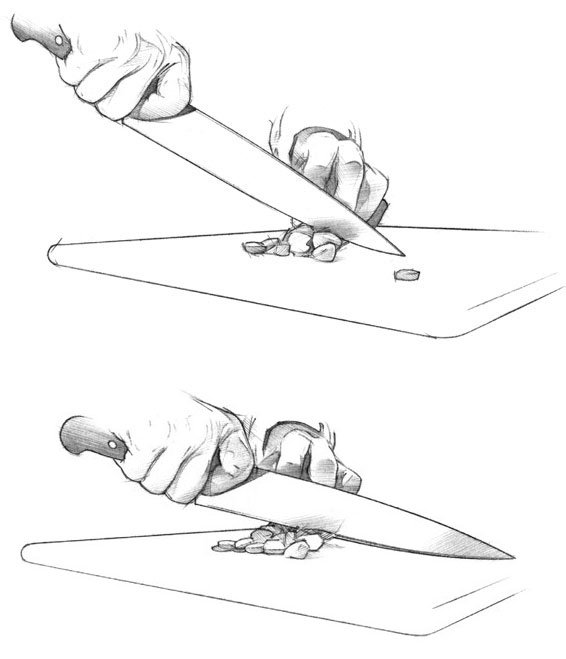Basic chef’s knife techniques
Sliding and chopping are the two basic chef’s knife techniques. The sliding technique is used to cut and slice food such as onions, scallions, and carrots. The knife slides forward while cutting, and is pulled back, above or away from the food, to slice again. Note how the tip of the knife stays on the cutting board.
The second technique is used to chop herbs or mince food that’s already been cut, such as onions or garlic. One hand holds the knife as the other hand rests on top of the knife near the end of the blade. Picture the face of a clock. The knife then pivots while chopping, going from approximately 4:00 to 5:00 (maybe 3:30 to 5:30), and back again, to continuously chop the food smaller and smaller. A large mound of parsley sprigs will be reduced to small bits of minced parsley in less than a minute by using this technique.
Both techniques have one thing in common: the tip of the chef’s knife does not leave the cutting board while you’re cutting, slicing, or chopping. This is important because many people are under the impression that lifting the knife in the air while cutting and chopping is faster, more efficient, and cool looking. It’s none of these. Every time you lift your knife off the board, you are losing some control over it. Keeping the tip on the board allows you to begin your motion where you want it to be.
If you start, or continue, to have the knife in the air before cutting into the food, then the knife won’t go exactly where you want it to go. It might go there. But not every time. And not safely.










